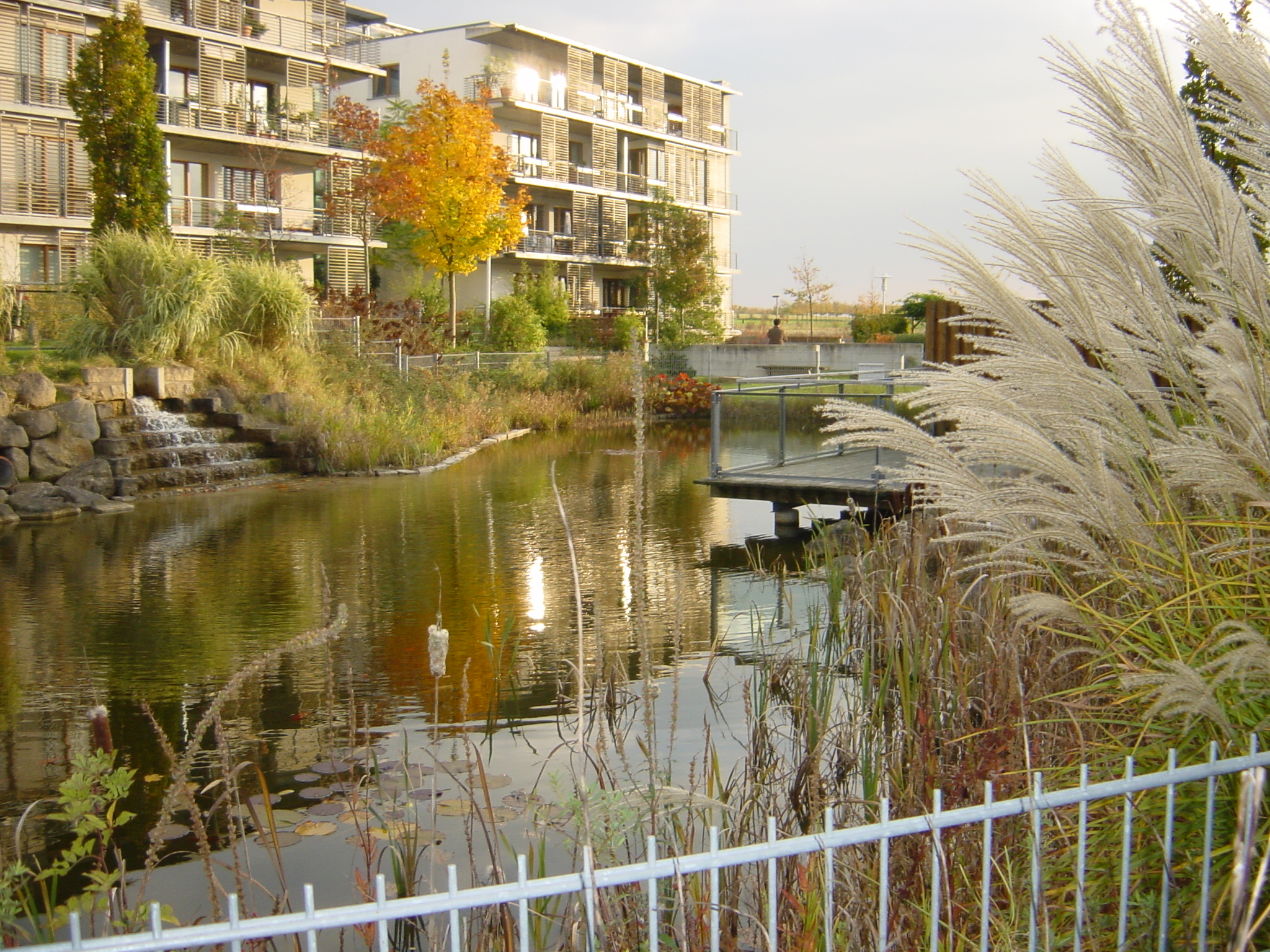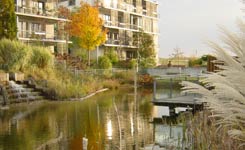Collaberative Services Make German Community Possible
chinagate.cn by Victoria Cole, July 10, 2015 Adjust font size:
The German city of Hannover harnessed a 20,000 residence shortage in the early 1990s to unveil a pioneering, socially-inclusive eco-district called "Kronsberg" at the 2000 World Expo. Since then, the community has hosted over 7,200 experts learning from the community’s urban planning and ecological optimization.
According to the UK's former Office of the Deputy Prime Minister, "Kronsberg sustainable settlement is an example for the world to follow", and that Kronsberg is "the largest and most visionary town planning, social and ecological project in Europe."

A Kronsberg residential area enhancing asthetic atmosphere using natural water resources [Photo credits: Google Images]
Utilizing an approach to the design of sustainable urban development solutions called "Urban NEXUS", the city to was able to identify and pursue possible synergies between sectors, jurisdictions, and technical domains. The city also founded the highly-influential KUKA, the Kronsberg Environmental Liaison Agency, with a limited 5-year funding, and set to work integrating institutions, services and facilities and social behaviors throughout the entirety of the project.
Kronsberg today seeks to support "a well-balanced social mix, with a range of cultures, beliefs and social backgrounds successfully living and working side-by-side." As such, KUKA initally conducted numerous informational events targeting residents and offered information and consulting services. By 2001, 90% of the Kronsberg community had used KUKA's services. Those who have since moved to the district, receive such information from a city representative. All residents also receive a “Kronsberg-Binder” educating them on sustainable behavior and information concerning green community programs.
The physical construction and location of Kronsberg gave special consideration towards minimizing waste, preserving arable land and enabling access to public meadows along the community’s edge that promote biodiversity. Kronsberg tenures also include affordable housing and owner-occupied residences. Kronsberg also sustains 3,000 jobs, as well as, a health center, a library, churches, schools, shops and offices.
Green structural planning accounts for much of Kronsberg's saved energy, like a structure called the "Passive House", comprised of 32 terraced-houses, that requires almost 90% less heating energy due to their efficient use of "insulation, extremely airtight structures, air extraction plants with heat recovery, triple glazing and solar thermal collectors." Additionally, every residential area in Kronsberg has reduced their carbon emissions by more than 60%, compared to average German developments.
The community harnesses wind turbines, decentralized natural gas CPH (combined heat and power) plants and solar energy. The site manages many separated recycling stations, some stored underground protecting visual appeal. Kronsberg also employs a rainwater management system involving "grassed hollows" that run alongside the pavements, collects and treats rainwater on-site in and ultimately feeds into a nearby stream.
Although three tram stops service Kronsberg, cycling and walking routes are also well-managed throughout the neighborhood, and cycle storage facilities are provided in most apartment blocks. As a result, motorized traffic is kept to a minimum at Kronsberg, with active traffic calming measures taken.
Source: ICLEI


